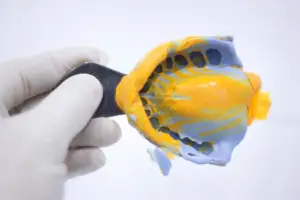Xanthan gum is a versatile food additive that is widely used in various industries due to its unique properties as a thickening, stabilizing, and emulsifying agent. It is a polysaccharide that is produced through a fermentation process involving a specific strain of bacteria, Xanthomonas campestris.
The production of xanthan gum begins with the preparation of a nutrient-rich growth medium, typically containing glucose or other carbohydrate sources, along with essential minerals and nutrients. The Xanthomonas campestris bacteria are then introduced into the medium, where they metabolize the available nutrients and secrete the xanthan gum as a byproduct of their metabolic processes.
During the fermentation process, the bacteria produce a complex mixture of high-molecular-weight polysaccharides, primarily composed of glucose, mannose, and glucuronic acid. These polysaccharides are linked together through a unique arrangement of glycosidic bonds, forming a highly structured and stable polymer chain.
The fermentation process is carefully controlled and monitored to ensure optimal growth conditions for the bacteria and maximize xanthan gum production. Once the fermentation is complete, the xanthan gum is recovered from the fermentation broth through a series of purification steps, which may include precipitation, filtration, and drying processes.
The resulting xanthan gum is a fine, off-white powder that is highly soluble in both hot and cold water. When dissolved in water, xanthan gum forms a highly viscous and stable solution, which is resistant to changes in temperature, pH, and the presence of various salts and enzymes.
Xanthan gum’s unique properties make it an excellent choice for a wide range of applications in the food industry. It is commonly used as a thickener in sauces, dressings, and gravies, as well as a stabilizer in ice creams, yogurts, and other dairy products. It is also used as an emulsifier in salad dressings, mayonnaise, and other emulsified products, helping to prevent separation and maintain a smooth, homogeneous texture.
Beyond the food industry, xanthan gum finds applications in various other sectors, including pharmaceuticals, cosmetics, and industrial products. It is used as a suspending agent in liquid medications, as a thickener in personal care products like shampoos and lotions, and as a rheology modifier in paints, coatings, and drilling fluids.
In summary, xanthan gum is a versatile and valuable polysaccharide produced through the fermentation of Xanthomonas campestris bacteria. Its unique properties make it an indispensable ingredient in a wide range of industries, contributing to the stability, texture, and overall quality of numerous products.





